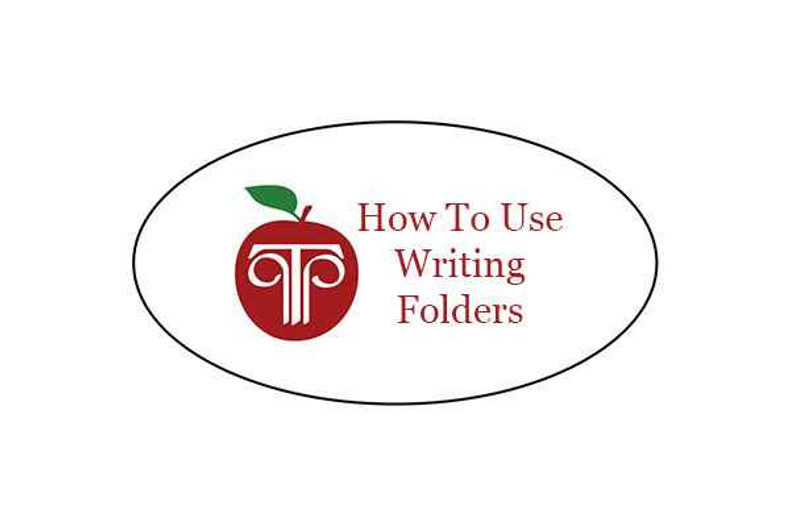Teaching writing should be an ongoing activity in every classroom. One problem that arises from ongoing writing is keeping all the writing organized. One easy solution to keeping students’ writing organized is to use writing folders.
What Are Writing Folders?
There are three main components in writing folders. Each folder should have a place for the student’s work in progress, the student’s graded writing work, and a place for writing resources. Writing folders can be plain and utilitarian or decorated by the student depending on their interests and artistic talent. A writing folder could be a loose leaf binder with three sections. The important thing is not the container but that students’ writing is organized and easily accessible.
Writing In Progress
The writing in progress can include original work that the student has not completed or work that is being edited or revised. Encourage your students to look back at previous work and edit and revise it, especially after new skills are taught in class. For example, after a lesson on descriptive writing students might want to pull out one of their previous assignments or one of their works in progress to rewrite any descriptions in it, using what they have just learned. This is a great way for students to apply the new lesson and see how to improve their writing.
Graded Papers
The graded papers have two purposes. The first is to serve as a reference to remind students of comments that were made on previous writing so they can apply that information to their new writing. The second purpose is so the papers are easily found during student/teacher conference time. Regular writing conferences are a proven strategy for improving students’ writing, and having the graded papers handy to reference is essential.
Writing Resources
The writing resources section of the folder should have writing rubrics and a page describing common editing marks to use when editing papers or working with a partner. It might also contain lists of words such as vivid verbs or strong adjectives or fact words versus opinion words to use in writing. Other lists of words might include lists made after an instructional lesson perhaps position words, time-order words, or words that sound like sounds or actions or new vocabulary words. These word lists should also continually grow. The resource side of the folder should also include a list of writing ideas where students frequently write down their new ideas for writing projects.
Benefits Of Using Writing Folders
The benefits of using writing folders are many. One is that it makes a strong positive statement about the values of writing in the classroom and the value of the individual student’s work. The folder of a student’s work can also be a great source for discussion about grades, but more importantly about the writing growth that the student has made over a period of time. It is also a great communication tool for parents to see how their child’s writing abilities have grown. another important benefit is writing folders contain materials students can rework to improve their writing, revisit for writing ideas or review to help them remember strategies and skills previously taught. Finally, writing folders help students stay organized and find what they need quickly.

